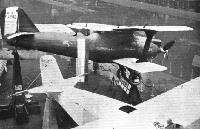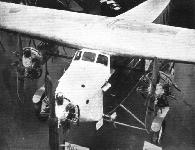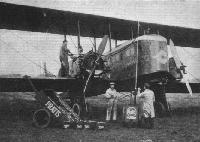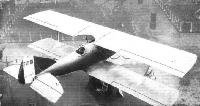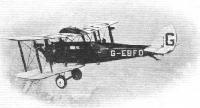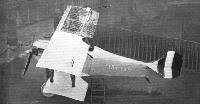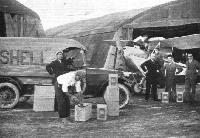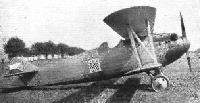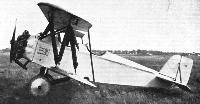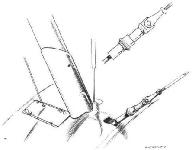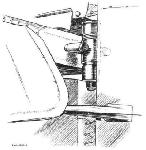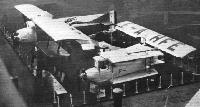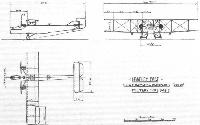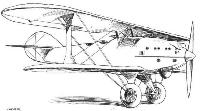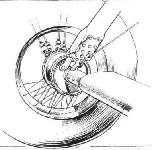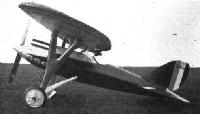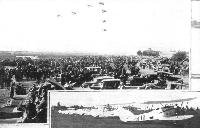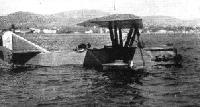Фотографии
-
FROM FAIR NIPON: The two Breguet biplanes, on which the Japanese pilots flew from Tokio to London in 1925, fill up with " Pratt's" before departing from Croydon.
Самолёты на фотографии: Breguet Br.19 - Франция - 1922
-
THE BREGUET XIX, with 500 h.p. Hispano engine. This is the type which made the Paris - Omsk and Paris - Djask non-stop flights.
Самолёты на фотографии: Breguet Br.19GR Grand Raid / Br.19TF Super Bidon - Франция - 1925
-
The world's distance record holder: The Breguet 19, which flew from Paris to Djask, a distance of 5,400 km, (3,350 miles), in 32 hours, nonstop. In the foreground may be seen the rear portion of the Breguet 26T commercial aeroplane.
Самолёты на фотографии: Breguet Br.19GR Grand Raid / Br.19TF Super Bidon - Франция - 1925Breguet Br.26T - Франция - 1926
-
The Union of South Africa Air Mail Service, which operated between Cape Town and Durban last year, filling up with Shell.
Самолёты на фотографии: De Havilland D.H.9 - Великобритания - 1917
-
THE FOKKER F. VII. 3m is a commercial monoplane. The three engines fitted are Armstrong-Siddeley "Lynx" of 180 h.p. each.
Самолёты на фотографии: Fokker F.VII / C-2 / F.XIV - Нидерланды - 1924
-
Регистрационный номер: H-NADS The Fokker Stand: On the extreme left a "nose" with "Jupiter" engine. Then a C.V.D. with Hispano engine and, on the right, the F.VII 3M with three Siddeley "Lynx" engines.
Самолёты на фотографии: Fokker C.V / C.VI - Нидерланды - 1924Fokker F.VII / C-2 / F.XIV - Нидерланды - 1924
-
This view from above gives a good idea of the power plant arrangement, pilot's cockpit, &c, of the Fokker F.VII 3m.
Самолёты на фотографии: Fokker F.VII / C-2 / F.XIV - Нидерланды - 1924
-
The undercarriage of the Fokker F.VII-3m is unusual. A feature is that individual rubber rings can be changed without disturbing the others. Also the number of rings can be proportioned according to the load which the machine is carrying.
Самолёты на фотографии: Fokker F.VII / C-2 / F.XIV - Нидерланды - 1924
-
The L.G.L.32C.1, with "Jupiter" engine, was exhibited in a somewhat alarming attitude.
Самолёты на фотографии: Gourdou-Leseurre GL-31 / LGL-32 - Франция - 1925
-
THE L.G.L.33 C.1, with 450 h.p. Lorraine-Dietrich, is similar to the 32 C.1, except for the water-cooled engine.
Самолёты на фотографии: Gourdou-Leseurre GL-31 / LGL-32 - Франция - 1925
-
THE L.G.L.32 C.1, with Bristol "Jupiter" engine, is a single-seater fighter of the parasol monoplane type.
Самолёты на фотографии: Gourdou-Leseurre GL-31 / LGL-32 - Франция - 1925
-
The shock-absorbers on the Loire-Gourdou-Leseurre machines are enclosed in fairings, the crank shown being intended to prevent axle and fairings from turning.
Самолёты на фотографии: Gourdou-Leseurre GL-31 / LGL-32 - Франция - 1925
-
Air Services and "Pratt's": One of the French Air Union Farman Goliath air liners, employed on the Paris-London service, filling up with "Pratt's" at Croydon.
Самолёты на фотографии: Farman F.60 Goliath / F.169 - Франция - 1918
-
A WORLD'S RECORD HOLDER: The Spad 61 holds the world's record for altitude.
Самолёты на фотографии: Bleriot-SPAD S.61 - Франция - 1923
-
The Bleriot-Spad 61 holds the world's altitude record with a height of 12,442m. (40,800 ft.).
Самолёты на фотографии: Bleriot-SPAD S.61 - Франция - 1923
-
Регистрационный номер: G-EBFO The D.H.50 fitted with Siddeley "Jaguar" engine, flown by Sir Alan Cobham to Rangoon and back, Cape Town and back, and Melbourne and back. This actual machine has covered over 125,000 miles in extremes of climatic conditions.
Самолёты на фотографии: De Havilland D.H.50 - Великобритания - 1923
-
Самолёты на фотографии: FIAT CR.20 - Италия - 1926
-
SOME FIAT CONSTRUCTIONAL DETAILS: On the left, the built-up steel spar. The main section is indicated where spar is shown cut through. Local reinforcement, in the form of internal angle plates, is used at points of interplane strut attachments. The ribs (of Duralumin) are square-section tubes, secured to the spars as shown. On the right, details of wing-tip construction, etc.
Самолёты на фотографии: FIAT CR.20 - Италия - 1926
-
THE AVIA B.H.26 two-seater fighter has a "Jupiter" engine.
Самолёты на фотографии: Avia BH-26 / BH-28 - Чехословакия - 1927
-
The Milos Bondy "Avia B.H.26" is the first Czechoslovak two-seater fighter to be fitted with a "Jupiter" engine.
Самолёты на фотографии: Avia BH-26 / BH-28 - Чехословакия - 1927
-
Small auxiliary surfaces mounted on cranks form the aileron balances on the Avia B.H.26
Самолёты на фотографии: Avia BH-26 / BH-28 - Чехословакия - 1927
-
Eastward Ho! by "Moths": Having once got clear of the bad weather hold-ups in England and France, Capt. Stack and Mr. Leete, of the Lancashire Aero Club, are now making good progress towards India in their D.H. "Moths." Our picture shows them (Capt. Stack on the left and Mr. Leete on the right, in front of the machine) superintending the refuelling with "Shell" spirit at Malta.
Самолёты на фотографии: De Havilland Moth / D.H.60 - Великобритания - 1925
-
"PRATT'S" IN THE WORLD OF SPORT: The 1926 King's Cup Race was won by Capt. H. S. Broad on a D.H. "Moth" and "Pratt's." The "Moth" is shown above taking in its supply of fuel at Hendon.
Самолёты на фотографии: De Havilland Moth / D.H.60 - Великобритания - 1925
-
The Avimeta AVM 88 is built throughout of the light alloy Alferium, the product of the famous Creusot-Schneider firm.
Самолёты на фотографии: Avimeta 88 - Франция - 1926
-
The Avimeta AVM 88 is an all-metal parasol monoplane. Note the "Oxford bags"
Самолёты на фотографии: Avimeta 88 - Франция - 1926
-
The Avimeta AVM 88 is a two-seater reconnaissance-fighter with Hispano Engine
Самолёты на фотографии: Avimeta 88 - Франция - 1926
-
Parnall Types - From left to right: The Plover seaplane, Pixie, Possum triplane, and Plover ship fighter.
Самолёты на фотографии: Parnall Pixie - Великобритания - 1923Parnall Plover - Великобритания - 1922Parnall Possum - Великобритания - 1923
-
Регистрационный номер: J8068 A "STAR TURN" AT THE R.A.F. DISPLAY: The extraordinary Cierva "Autogyro" making one of its remarkable vertical descents.
Самолёты на фотографии: Cierva/Avro C.6 - Великобритания - 1924
-
Регистрационный номер: G-EBJT [2] "BANKING ACCOUNTS" AT LYMPNE: 3. The Westland "Widgeon" started scratch in the Grosvenor Race.
Самолёты на фотографии: Westland Widgeon - Великобритания - 1924
-
Регистрационный номер: G-EBJT [2] "PRATT'S" IN THE WORLD OF SPORT: The Westland "Widgeon," which made fastest time in the Grosvenor Cup Race at Lympne last summer, using "Pratt's."
Самолёты на фотографии: Westland Widgeon - Великобритания - 1924
-
The Vojenska S.20 single-seater fighter with 300 h.p. Skoda-Hispano.
Самолёты на фотографии: Letov S-20 - Чехословакия - 1925
-
THE BOOMERANG: Plan view, from below, of Capt. Hill's tailless'aeroplane "Pterodactyl." This view was secured with the camera pointing almost vertically upward.
Самолёты на фотографии: Westland-Hill Pterodactyl - Великобритания - 1925
-
THE FOX DAY-BOMBER: This photograph shows the clean lines and small frontal area of the Fairey "Fox." The suppression of all excrescences which might cause head resistance is particularly evident.
Самолёты на фотографии: Fairey Fox - Великобритания - 1925
-
THE FOKKER C. V. can be supplied with a number of different engines, and can be quickly converted into a two-seater fighter, a reconnaissance machine, a bomber, or even a school machine.
Самолёты на фотографии: Fokker C.V / C.VI - Нидерланды - 1924
-
THE POTEZ 25 G.R. with 450 h.p. Lorraine engine, is a long-distance reconnaissance biplane.
Самолёты на фотографии: Potez Potez 25 - Франция - 1925
-
THE POTEZ 25 A.2 with 450 h.p. Hispano engine, is an army co-operation biplane of recent design.
Самолёты на фотографии: Potez Potez 25 - Франция - 1925
-
The Potez 25 Army-Co-operation biplane is of recent design.
Самолёты на фотографии: Potez Potez 25 - Франция - 1925
-
THE C.A.M.S. 37A. is an Amphibian, with 450 h.p. Lorraine-Dietrich engine. It is used as a fleet spotter.
Самолёты на фотографии: CAMS CAMS 37 - Франция - 1926
-
Регистрационный номер: F-AHCJ The F.B.A.21 HMT-6, with 450 h.p. Lorraine, is a transport amphibian flying boat
Самолёты на фотографии: FBA Type 19 / 21 - Франция - 1924
-
The Schreck - F.B.A. amphibian has an open cockpit for passengers behind the wings, while the pilot's cockpit is in front. This type of machine won the competition for commercial seaplanes in 1925.
Самолёты на фотографии: FBA Type 19 / 21 - Франция - 1924
-
The undercarriage of the Schreck F.B.A. amphibian is'raised by cables passing through the lower plane. When the wheels are lowered they are secured in position by the device shown, the male portion being mounted on the sides of the boat hull.
Самолёты на фотографии: FBA Type 19 / 21 - Франция - 1924
-
THE L.G.L.23 TS, with 180 h.p. Hispano engine, is an ambulance 'plane.
Самолёты на фотографии: Gourdou-Leseurre GL-2 / GL-21 / GL-22 / GL-23 / GL-40 - Франция - 1919
-
The Aero Ab.11 is fitted with a 240 h.p. "Perun" engine. The machine is of straightforward orthodox design and construction.
Самолёты на фотографии: Aero A.11 - Чехословакия - 1925
-
THE ALBATROS L.68a: Three-quarter rear view. The wings are mainly planked with three-ply, although trailing edge and flaps are fabric covered. The ailerons incorporate the Handley Page - Lachmann slot.
Самолёты на фотографии: Albatros L.68 Alauda - Германия - 1925
-
THE ALBATROS L.68a: Side View. The engine is a 100 h.p. Siemens radial.
Самолёты на фотографии: Albatros L.68 Alauda - Германия - 1925
-
The S.E.C.M.- Amiot 120 B.N.2 is a long-distance two-seater night bomber with 600 h.p. Renault engine. It is of all-metal construction.
Самолёты на фотографии: Amiot Amiot 120 - Франция - 1925
-
Ajax мало отличался от своего предшественника - самолета Atlas, поэтому довольно часто между ними возникала путаница.
The Armstrong-Whitworth "Ajax": A two-seater general purpose aeroplane with "Jaguar" engine. Can be fitted with float undercarriage.Самолёты на фотографии: Armstrong Whitworth Atlas / Ajax - Великобритания - 1925
-
ON THE ARMSTRONG.WHITWORTH "AJAX": Spring-loaded turnbuckles are incorporated in the landing wires so as to keep them taut under all conditions. The strut attachment is neatly faired in aluminium sleeve held in place by a split pin.
Самолёты на фотографии: Armstrong Whitworth Atlas / Ajax - Великобритания - 1925
-
The tail trimming gear of the Armstrong-Whitworth "Ajax" is mounted externally and is very accessible.
Самолёты на фотографии: Armstrong Whitworth Atlas / Ajax - Великобритания - 1925
-
The "Avia B.H.11," with 60 h.p. Walter engine is a two-seater light 'plane with many victories to its credit, most recently that of the "Coppa d'Italia."
Самолёты на фотографии: Avia BH-9 / BH-10 / BH-11 / BH-12 / BH-16 - Чехословакия - 1923
-
THE AVIA B.H.11, with Walter engine, is the winner of a number of competitions, most recently that for the "Coppa d'Italia."
Самолёты на фотографии: Avia BH-9 / BH-10 / BH-11 / BH-12 / BH-16 - Чехословакия - 1923
-
Регистрационный номер: N171 Хотя Ava был построен в 1924 году, на публике он впервые появился только в 1926-м на базе британских ВВС в Хендоне.
Самолёты на фотографии: Avro Ava / Type 557 - Великобритания - 1924
-
THE TWO AVRO'S IN THE TESTS: 1, Hinkler lands the "Avian" without difficulty.
Самолёты на фотографии: Avro Avian / Type 594/616 - Великобритания - 1926
-
The Bernard (Ferbois) 15 C.1 somewhat resembles the Fokker machines in its layout. It is, however, of all-wood construction.
Самолёты на фотографии: Bernard Bernard 14 / 15 - Франция - 1925
-
The Bernard 15 C.1 has semi-cantilever wing bracing and sesquiplan wing formation. Except for struts, &c., this machine is of all-wood construction
Самолёты на фотографии: Bernard Bernard 14 / 15 - Франция - 1925
-
The Blackburn "Velos" (Napier "Lion" Engine).
Самолёты на фотографии: Blackburn Velos / T.3 - Великобритания - 1925
-
The Salmson-Bechereau C.2 two-seater fighter with 500 h.p. Salmson.
Самолёты на фотографии: Buscaylet Buscaylet-Bechereau BB.2 - Франция - 1924
-
The Salmson-Bechereau two-seater fighter has an unusual strut arrangement. Both the main wing and the auxiliary wing supporting the undercarriage are set at a negative dihedral angle.
Самолёты на фотографии: Buscaylet Buscaylet-Bechereau BB.2 - Франция - 1924
-
Регистрационный номер: F-AHFE The Caudron Stand: The large machine is the C.104, two-seater fighter, while the smaller types include training machines and a light monoplane two-seater, the C.109.
Самолёты на фотографии: Caudron C.101 / C.103 / C.104 / C.107 - Франция - 1925Caudron C.109 / C.110 - Франция - 1925
-
The slot for the undercarriage axle is formed by a short welded-on tube on the Caudron C.109 parasol monoplane two-seater light 'plane.
Самолёты на фотографии: Caudron C.109 / C.110 - Франция - 1925
-
Handley Page heavy bombing aeroplane (900 hp) military type (W8-D)
Самолёты на фотографии: Handley Page Hyderabad/H.P.24 / Hinaidi/H.P.33 / Clive/H.P.35 - Великобритания - 1923
-
ROUND THE WORLD FLIGHT: One of the Douglas machines, on which the American pilots flew round the world in 1924, being refuelled with "Pratt's."
Самолёты на фотографии: Douglas DWC / World Cruiser - США - 1923
-
Регистрационный номер: G-EBMB The Hawker "Cygnet" is a two-seater "light" aeroplane in the actual sense, the structure weight being only 300 lbs. Fitted with Bristol Cherub engine, this machine won the "Daily Mail" Competition this year, and a sister machine obtained second place.
Самолёты на фотографии: Hawker Cygnet - Великобритания - 1924
-
Регистрационный номер: G-EBMX THE FIRST IMPERIAL AIR ROUTE: Out of the darkness into sunshine. The lower picture was taken in the early hours of Monday morning just before the inaugural flight to India, and shows a small crowd of enthusiasts, who braved the bitter cold, gathered at Croydon to give Sir Samuel Hoare a hearty send-off. Above, the "Hercules" taken from another machine (at 7000 ft.) a few days previously.
Самолёты на фотографии: De Havilland Hercules / D.H.66 - Великобритания - 1926
-
Регистрационный номер: G-EBMW The de Havilland "Hercules" in flight. Five of these machines, fitted with three Bristol "Jupiters," are being built for the desert air route from Cairo to Karachi. The "Hercules" will take off fully loaded with only two engines running, and only loses height slightly flying on one engine.
Самолёты на фотографии: De Havilland Hercules / D.H.66 - Великобритания - 1926
-
THE MORANE-SAULNIER E.P.2, with 80 h.p. le Rhone, is an elementary training machine.
Самолёты на фотографии: Morane-Saulnier AR (MS-35) / AS (MS-36) - Франция - 1915
-
THE MORANE-SAULNIER 129 E.T.2, with 180 Hispano, is an advance training aeroplane.
Самолёты на фотографии: Morane-Saulnier MS.129 / MS.130 - Франция - 1925
-
The Morane-Saulnier (exhibit consisted of three parasol monoplanes, of which the type 132, with 120 h.p. Salmson, is shown in the foreground.
Самолёты на фотографии: Morane-Saulnier MS.129 / MS.130 - Франция - 1925
-
THE MORANE-SAULNIER 132, with 120 h.p. Salmson, is designed as a touring machine.
Самолёты на фотографии: Morane-Saulnier MS.129 / MS.130 - Франция - 1925
-
The Morane-Saulnier monoplanes have their shock-absorbing gear enclosed in the undercarriage legs.
Самолёты на фотографии: Morane-Saulnier MS.129 / MS.130 - Франция - 1925
-
Single-seater fighter with slots closed.
HANDLEY PAGE H.P.21. Built in the mid-nineteen-twenties, the Handley Page single-seat H.P.21 "Scout" experimental was an advanced monoplane with slotted wings. Powered by a 232-h.p . B.R.2 engine, it had a top speed of 146 m.p.h. and a service ceiling of 21,000 ft. Span was 29 ft. 3 in. and gross weight 2.030 lb. Twin machine guns were provided and float could be fitted if desired.Самолёты на фотографии: Handley Page H.P.21 - Великобритания - 1923
-
Single-seater fighter with slots open.
Early lift slots and flaps on a Handley Page monoplane built for the American navy. The engine was a Bentley rotary.Самолёты на фотографии: Handley Page H.P.21 - Великобритания - 1923
-
Регистрационный номер: F-AIBS The Farman F.170 with 500 h.p. Farman engine is an eight-passenger commercial aeroplane.
Самолёты на фотографии: Farman F.170 Jabiru - Франция - 1925
-
The "Ventre-a-Terre": An unconventional view of the Farman commercial monoplane with 500 h.p. Farman engine.
Самолёты на фотографии: Farman F.170 Jabiru - Франция - 1925
-
Some Farman details: The upper left-hand sketch shows the separate tail trimming plane. The use of this enables the main tail plane to be rigidly attached. On the right the unusual placing and mounting of one of the radiators on the Farman commercial monoplane. The cabin is heated by hot water from the radiator. Below, the undercarriage of the "Ventre-a-Terre"
Самолёты на фотографии: Farman F.170 Jabiru - Франция - 1925
-
The Vojenska S.18 is a school machine with 60 h.p. Walter Engine.
Самолёты на фотографии: Letov S-18 / S-118 / S-218 Smolik - Чехословакия - 1925
-
Two Vojenska machines. In the foreground the S.16, a long-distance reconnaissance biplane with 450 h.p. Lorraine engine. In the background the little S.18, a school machine with 60 h.p. Walter engine.
Самолёты на фотографии: Letov S-16 - Чехословакия - 1926Letov S-18 / S-118 / S-218 Smolik - Чехословакия - 1925
-
The Vojenska S.18 school machine with 60 h.p. Walter engine. The wing strutting is somewhat unusual.
Самолёты на фотографии: Letov S-18 / S-118 / S-218 Smolik - Чехословакия - 1925
-
Регистрационный номер: N195 Gloster III. racing seaplane with Napier Lion engine.
Самолёты на фотографии: Gloster I - III - Великобритания - 1923
-
The Hanriot Stand: In the foreground the H.14S Ambulance machine with 80 h.p. le Rhone engine. Behind that the H.41 training seaplane with 120 h.p. Salmson, and in the background the H.35 advanced training machine with 180 h.p. Hispano.
Самолёты на фотографии: Hanriot H.34 / H.35 - Франция - 1924Hanriot HD.14 / HD.17 / HD.41 - Франция - 1920
-
A low-power ambulance 'plane: The Hanriot H.14S., which is fitted with 80 le Rhone engine, has accommodation for one stretcher case, the arrangement being shown in this sketch.
Самолёты на фотографии: Hanriot HD.14 / HD.17 / HD.41 - Франция - 1920
-
Регистрационный номер: J6989 The Hawker "Heron" with Jupiter Engine is a metal fighter embodying some novel and advanced constructional features.
Самолёты на фотографии: Hawker Heron / Hornbill / Hawfinch / Hoopoe - Великобритания - 1925
-
The Vojenska S.16 long-distance reconnaissance biplane with 450 Lorraine-Dietrich.
Самолёты на фотографии: Letov S-16 - Чехословакия - 1926
-
The P. Levasseur three-seater naval reconnaissance aeroplane is fitted with "droppable" undercarriage, water-tight fuselage and wing tip floats.
Самолёты на фотографии: Levasseur PL.3 / PL.4 - Франция - 1924
-
The P. Levasseur three-seater naval reconnaissance aeroplane has a detachable undercarriage and a watertight fuselage.
Самолёты на фотографии: Levasseur PL.3 / PL.4 - Франция - 1924
-
The nose of the "Avion Marin," showing skids intended to prevent machine from nosing over on alighting on the water.
Самолёты на фотографии: Levasseur PL.3 / PL.4 - Франция - 1924
-
The P. Levasseur 7.T Limousine with "Jupiter" Engine.
Самолёты на фотографии: Levasseur PL.3 / PL.4 - Франция - 1924
-
The Pierre Levasseur two-seater fighter has a rigid undercarriage, the only springing being provided by the tyres.
Самолёты на фотографии: Levasseur PL.6 - Франция - 1926
-
Details of the rigid undercarriage on the P. Levasseur two-seater fighter.
Самолёты на фотографии: Levasseur PL.6 - Франция - 1926
-
The P. Levasseur VI C.2 two-seater fighter with 500 h.p. Hispano Engine.
Самолёты на фотографии: Levasseur PL.6 - Франция - 1926
-
The Liore and Olivier LeO 21 is a twin-engined commercial biplane with two "Jupiter" engines.
Самолёты на фотографии: Liore et Olivier LeO 21 - Франция - 1926
-
The cabin of the Liore and Olivier LeO 21 is partly divided by the pilot's cockpit. The same door in the starboard side gives access to both sections of the cabin.
Самолёты на фотографии: Liore et Olivier LeO 21 - Франция - 1926
-
The Liore and Olivier LeO H.190 is a transport flying boat fitted with 420 h.p. "Jupiter" engine.
Самолёты на фотографии: Liore et Olivier LeO H.19 - Франция - 1926
-
A Batch of Supermarine "Southamptons" at mooring off Cromer.
Самолёты на фотографии: Supermarine Southampton / Solent - Великобритания - 1925
-
THE NIEUPORT-DELAGE 42 C.1 single-seater fighter with 500 h.p. Hispano engine.
Самолёты на фотографии: Nieuport-Delage Ni-D-42 / Ni-D-62 - Франция - 1924
-
The two Nieuport-Delage fighters. On the left the type 42C1, a "sesquiplan," and on the right the new 48C1, in which the diminutive lower wing has disappeared altogether. These machines had uncommonly fine cockpit arrangements.
Самолёты на фотографии: Nieuport-Delage Ni-D-42 / Ni-D-62 - Франция - 1924Nieuport-Delage Ni-D-48 - Франция - 1926
-
THE NIEUPORT-DELAGE 48 C.1 is of the type now known in France as a "Light Fighter." The engine is a 400 h.p. Hispano.
Самолёты на фотографии: Nieuport-Delage Ni-D-48 - Франция - 1926
-
U.S. AIR MAIL SERVICES, C.A.M. No. 8: The Ryan "M-1" monoplane, fitted with a 200 h.p. Wright "Whirlwind" engine, which forms part of the flying stock of the Pacific Air Transport, Inc., on the Seattle - Los Angeles route, part of which is flown by night.
Самолёты на фотографии: Ryan M-1 / M-2 - США - 1926
-
Регистрационный номер: G-EBKA Небольшая одноместная летающая лодка Cockle являлась доработанным вариантом S.1 Stellite, на который установили один двигатель Blackburn.
The small flying-boat "Cockle"Самолёты на фотографии: Short Stellite / Cockle / S.1 - Великобритания - 1924
-
Vickers "Vixen" Military Two-seater (Napier "Lion" Engine).
Самолёты на фотографии: Vickers Vixen / Venture / Valparaiso / Valiant - Великобритания - 1923
-
THE WIBAULT 7 C.1, with "Jupiter" engine, is a single-seater fighter of all-metal construction. Vickers, Ltd., have built a number of these machines for the Chilean Government.
Самолёты на фотографии: Wibault Wib.3 / Wib.7 - Франция - 1923
-
The Salmson-Bechereau SRAP Commercial Aeroplane with 500 h.p. Salmson engine.
Самолёты на фотографии: Bechereau (SAB) SAB 1 - Франция - 1918
-
BRISTOLS IN CHILE: For some time past the Chilian Air Force has been employing a number of Bristol-Lucifer School machines with highly successful results - both as regards machine and engine. We show above a picture of a formation of seven of these Bristol-Lucifer 'buses at an Air Display held last September at El Bosque Aerodrome, near Santiago. Below, the seven machines are shown lined up on the aerodrome.
Самолёты на фотографии: Bristol Taxiplane / Primary Trainer - Великобритания - 1923
-
THE MARCONI TYPE A.D.6 WIRELESS INSTALLATION: Our picture shows this important equipment as fitted in the Handley Page W.9 "Hampstead" of Imperial Airways. On the right will be seen the aerial coiled up on its winch, next to the instrument box (normally completely enclosed) which contains both transmitter and receiver. The remote control switches will be seen to the right of and above the steering wheel. This installation will be fitted, specially modified, in the D.H.66 Cairo-Karachi machines.
Самолёты на фотографии: Handley Page Hamilton W.8e/H.P.26 / Hampstead W.9/H.P.27 - Великобритания - 1924
-
The Descamps 17 A2 is a two-seater fighter of very simple construction. The wheels are attached in their fairings somewhat after the style of a bicycle wheel. Rigid bracing is a feature of this machine.
Самолёты на фотографии: Descamps-Brunet DB-16 / DB-17 - Франция - 1924
-
Регистрационный номер: N187 The Hawker "Hedgehog" is a three-seater fleet reconnaissance machine with Jupiter engine and carries a big useful load.
Самолёты на фотографии: Hawker Hedgehog - Великобритания - 1924
-
The Westland "Yeovil."
Самолёты на фотографии: Westland Yeovil - Великобритания - 1925
-
Регистрационный номер: G-EBLG The Bristol "Boarhound" (Bristol "Jupiter") It is always of interest to trace the individuality of aircraft designers, and in the four Army cooperation machines taking part in the "Fly Past" there is an opportunity to do so. In the Bristol "Boarhound" Captain F. S. Barnwell, chief designer of the Bristol Aeroplane Company, shows his interpretation of the specification for a machine in which the requirements of work in conjunction with the Army shall be met. The high "deck" of the machine is obviously dictated by a desire to get a good view for both pilot and gunner, and air resistance has been reduced by placing the pilot's guns in tunnels on the side of the fuselage.
Самолёты на фотографии: Bristol Boarhound - Великобритания - 1925
-
The Saint-Nazaire "Richard-Penhoet" flying boat is fitted with five "Jupiter" engines. It has a span of 40 m.
Самолёты на фотографии: Richard-Penhoet 2 - Франция - 1926
-
THE BREGUET XXVI T, with "Jupiter" engine is an all-metal commercial aeroplane.
Самолёты на фотографии: Breguet Br.26T - Франция - 1926
-
Sectioned view of the cabin of the Breguet commercial aeroplane
Самолёты на фотографии: Breguet Br.26T - Франция - 1926
-
The Caudron C.104 G.R. long-distance reconnaissance two-seater with "Jupiter" engine.
Самолёты на фотографии: Caudron C.101 / C.103 / C.104 / C.107 - Франция - 1925
-
The Dyle and Bacalan D.B.10 night-bomber with two "Jupiter" engines.
Самолёты на фотографии: Dyle et Bacalan DB-10 - Франция - 1926
-
THE HANRIOT H. 35, with 180 h.p. Hispano engine, is an advanced training machine.
Самолёты на фотографии: Hanriot H.34 / H.35 - Франция - 1924
-
The Koolhoven F.K.35 is a two-seater machine convertible from monoplane into biplane. The engine is a "Jupiter." The circular cockpit coaming is designed to take the new Koolhoven gun turret.
Самолёты на фотографии: Koolhoven FK-35 - Нидерланды - 1926
-
Some Koolhoven details: On the left, a view of the centre portion of the monoplane wing, showing how it fits into the fuselage. The cut out in the latter for the accommodation of the wing is shown on the right. Below is a diagram of the mounting of the Koolhoven mechanically-operated gun turret.
Самолёты на фотографии: Koolhoven FK-35 - Нидерланды - 1926
-
THE KOOLHOVEN F.K.35 is a "Jupiter"-engined two-seater fighter, which can be converted from monoplane to biplane and vice versa.
Самолёты на фотографии: Koolhoven FK-35 - Нидерланды - 1926
-
THE POTEZ 28 G.R. has a 550 h.p. Renault geared engine.
Самолёты на фотографии: Potez Potez 28 - Франция - 1926
-
The H. Potez 28 G.R. long-distance reconnaissance biplane is, in spite of its large span, a single-bay machine. The belly of the fuselage contains extra fuel tanks.
Самолёты на фотографии: Potez Potez 28 - Франция - 1926
-
Canadian-Vickers' "Varuna" Seven-seater Seaplane (Forestry Fire Fighter).
Самолёты на фотографии: Canadian Vickers Varuna - Канада - 1926
-
The S.E.C.M. 150T commercial machine, of which only the centre portion was exhibited (in skeleton). The wing construction is somewhat similar to the Junkers.
Самолёты на фотографии: SECM (Amiot) 150T - Франция - 1926
-
THE S.P.C.A. "Meteore-63" is a three-engined commercial flying boat, with 180 h.p. Hispano engines. Only a scale model will be exhibited.
Самолёты на фотографии: SPCA Meteore 63 - Франция - 1925
-
The Villiers Type II, 450 h.p. Lorraine, is a landplane capable of floating after a descent on the sea. It then has to be hoisted on board a vessel.
Самолёты на фотографии: Villiers Type II / V - Франция - 1925
-
The Villiers ''Avion Marin'' has a very small bottom 'plane. Note the wing tip float and the Lamblin radiator on the leading edge. The undercarriage can be dropped, part of the release gear being visible in this sketch.
Самолёты на фотографии: Villiers Type II / V - Франция - 1925
-
U.S. AIR MAIL SERVICES, C.A.M. No.9: The Laird biplane, fitted with a 200 h.p. Wright "Whirlwind" engine, the type of mail 'plane employed on the Chicago - Twin Cities route by Chas. Dickinson, the original contractor for this service. It is now operated by Northwest Airways with new machines.
Самолёты на фотографии: Laird Commercial - США - 1924
-
Three-quarter rear view of the Marcel Besson M.B.36. The machine is fitted with three "Jupiter" engines
Самолёты на фотографии: Besson MB-36 - Франция - 1930
-
The Ateliers des Mureaux exhibited a type 3C2 with unusual monoplane wing bracing. Behind it may be seen the skeleton of an all-metal fuselage.
Самолёты на фотографии: ANF Mureaux Mureaux 3 - Франция - 1927
-
The 3 C.2 two-seater fighter of the Ateliers des Mureaux is a parasol monoplane with unusual wing bracing.
Самолёты на фотографии: ANF Mureaux Mureaux 3 - Франция - 1927
-
Simple metal construction at Paris Show. These sketches show the details of the form of fuselage construction used on the Ateliers des Mureaux machines. Compared with some of the metal work exhibited this particular form is simple and should be cheap.
Самолёты на фотографии: ANF Mureaux Mureaux 3 - Франция - 1927
-
Самолёты на фотографии: Gloster Gamecock - Великобритания - 1925
-
Регистрационный номер: N177 A SHORT F.5 WITH ALL-METAL HULL: Note the fluted planing bottom. This photograph of the machine was taken on December 22, 1924.
Самолёты на фотографии: Short S.2 - Великобритания - 1925
Статьи
- Flight


